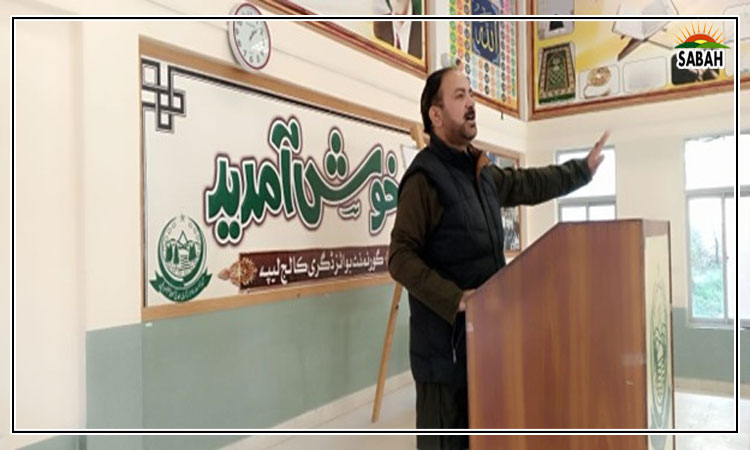DigitAll for climate…Zile Huma
The theme for UN International Womens Day 2023 was DigitALL: Innovation and technology for gender equality. This years International Womens Day highlighted the gender gap in technological advancement, which creates many hurdles for the socio-economic prosperity of women.
The aim of the theme is also to celebrate the achievements of women and girls making positive impacts on humanity through technology and innovation. There are many areas where technological solutions can help bridge the gender gap and empower women. Climate change is an area where the use of technology and innovative solutions can assist in reducing gender inequalities.
Women and girls all over the world are disproportionately impacted by the negative impacts of climate change. Technological solutions can help women and girls better adapt to climate-led catastrophes.
According to a report by the FAO, 72 per cent of women are associated with the agriculture sector out of the total women labor force in Pakistan. Floods and droughts in developing countries like Pakistan directly impact women financially. The provision of climate adaptive technologies to women can help them better deal with the impacts of climate change in the agriculture sector and reduce financial losses.
Similarly, many health and educational challenges arise after climate-led disasters like floods, droughts and smog. Climate change calamities like floods and glacier lake outburst floods (GLOF) also destroy homes, health infrastructure and educational institutions. According to a Unicef report Devastating Floods in Pakistan, vital infrastructure has been destroyed and damaged after the floods including nearly 27,000 schools and1,500 public health facilities.
The destruction of health units and communication networks after climate calamities leads to health crises making it worse for women to avail health facilities. Moreover, there are cultural and traditional barriers for women when it comes to visiting hospitals and clinics alone. In such a situation, if women are well versed in the use of technologies and online platforms, they can utilize telehealth services and get free advice on health challenges faced by them. The government should make arrangements to provide telehealth services for free consultations in emergencies for women.
As a result of climate disasters, a large chunk of the population, especially women, is displaced. Many families migrate to new places to find employment opportunities. As a consequence of displacement and demolished infrastructure, the education of women and girls is compromised.
Also, in a patriarchal society, education of male family members is given preference in a state of financial crisis. The use of technology for online education can provide solutions to female education issues during such catastrophes. Access to online education is also an easy and affordable means of knowledge sharing and can solve many issues of gender inequality in the education sector caused by climate change.
During natural catastrophes, women and girls can become a victim of domestic violence, kidnapping and rape. If women possess expertise in technological knowledge, it can help women get better access to digital safety measures normally established by the government as helplines and online complaint management systems. They can also easily access information about initiatives taken by the government to facilitate women and prevent any crimes against them.
To reduce the gender gap caused by climate change, governments need to spread digital literacy among women. We need to encourage women to study specialized subjects of information technology, linked to climate change. Higher education institutions should introduce subjects under IT and climate change studies complementing knowledge linking other sectors.
Students should be encouraged to conduct their research related to reducing the gender gap in climate change through technological solutions. Research institutions and universities can conduct workshops and seminars to spread awareness among people about the role of technological solutions to reduce gender inequality in climate change. Also, we need to create jobs for women IT experts in projects related to the use of technologies for mitigation and adaptation of climate change like early warning systems, geo-mapping, etc
International forums like annual climate change conferences should arrange discussions on digital literacy of women to better mitigate and adapt to climate change.
The use of technologies and innovative solutions to reduce the gender gap in climate-related issues is an important aspect that we need to promote.
Courtesy The News












